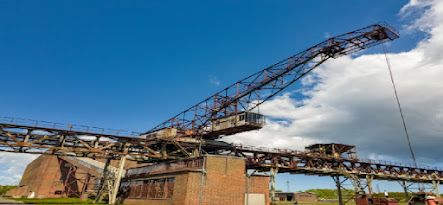Desired organizational characteristics
Not every organization is capable of successful execution of
approaches described in the preceding section. Let’s consider – again, based
largely on historical examples -- some of the key characteristics that help an
organization to succeed in resilient adaptations to technological surprise. A
particularly widely recognized characteristics of such nature is flexibility:
the ability of the organization to change its organizational structure,
techniques, procedures, and other forms of its 4 operation, even if such
changes are drastic and contradict established norms and past experiences. For
instance, although in 1941 in North Africa the British possessed excellent
anti-aircraft guns, the inflexible regimental culture prevented them from using
the guns against the German tanks. (Handel, 1987) Another important
characteristic is agility: the organization must be able to perform its actions
rapidly and to eliminate any barriers that may cause a delay in decision or
execution. This often requires the culture of delegating the authority to the
lowest echelon of the organization and encouraging initiative of even the most
junior members of the organization. For instance, when in 1986 the Afghan
guerrillas started to use Stinger missiles (a technological surprise) against
Soviet helicopters, the lack of independent initiative and creativity among the
Soviet junior officers was a significant factor in slow (about 18 months)
adaptation of the Soviets forces. (Miller, 2014) Both agility and flexibility
must be supported by effective intelligence: the ability of the organization to
obtain, analyse and disseminate intelligence about the technological surprise –
e.g., the novel weapon system and its effect of the organization’s operations
and assets, or a new tactical or strategic context – completely and
efficiently, in spite of the stress and disruption caused by the threat. For
instance, when in 1941 the Germans used their 88 mm gun against British tanks,
the British failed to collect sufficient intelligence about the events, and
remained unaware of the German weapon for several months after its initial use
in a battle. (Handel, 1987) Last but not least breadth and diversity are
vitally important: the organization should combine a diverse set of technical
and cultural competencies, as well as assets that are capable of a variety of
functions under different conditions. This is necessary in order to re-orient
an organization effectively against the technological surprise and to combine
the competencies and capabilities in novel ways. For instance, when facing
Egyptian anti-tank Sagger missiles – a technological surprise – the Israeli
homogenous tank units were unable to adapt until they were belatedly
diversified with infantry and artillery. (Miller, 2014)
Conclusions
Analysis of technological surprises in warfare –
particularly the study of historical cases of such surprises – is uniquely
valuable for identifying the advantages and limitations of resilience-based
approaches, the approaches to conducting resilient activities after an
unwelcome surprise, and the characteristics that an organization must foster
for the sake of improving its resilience. Historical experiences offer insights
into several key elements – typical activities and ways of executing them –
that are common to successful adaptations to technological surprises. However,
to build capabilities for effective execution of such activities, an
organization must develop several critical characteristics. These include
flexibility, agility, effective use of intelligence, and breadth and diversity.
While resilience-based approaches are likely to be less costly and more
practical than risk-based approaches, leaders of an organization must recognize
that improving the resilience of an organization must not lead to neglecting
appropriate measures for reducing the risk of a hazardous event. 5
Annotated bibliography
On flexibility: recovery from technological and doctrinal
surprise on the battlefield. Stanford University Press. Argues that recovery
from surprise depends largely on a characteristic of an organization the
authors call flexibility. Proves the assertion by considering multiple
historical cases of recovery from surprises. Handel, M. I. (1987).
Technological surprise in war. Intelligence and National Security, 2(1), 1-53.
Offers a typology and conditions of technological surprises, as well as means
to enhance or counter the technological surprise; uses a number of historical
examples. Miller, J. H. (2014). Strategic culture as the basis for military
adaptive capacity: Overcoming battlefield technological surprises. CUREJ:
College Undergraduate Research Electronic Journal, University of Pennsylvania.
Uses three in-depth case studies of historical events, connected largely to
technological surprises, in order to identify cultural and organizational
traits that support resilient adaptation. National Research Council. (2012).
Disaster resilience: A national imperative. Washington, DC: The National
Academies Press. https://doi.org/10.17226/13457 The White House. (2013). Presidential
policy directive: Critical infrastructure security and resilience. Retrieved
from
https://obamawhitehouse.archives.gov/the-pressoffice/2013/02/12/presidential-policy-directive-critical-infrastructure-security-and-resil




Comments
Post a Comment